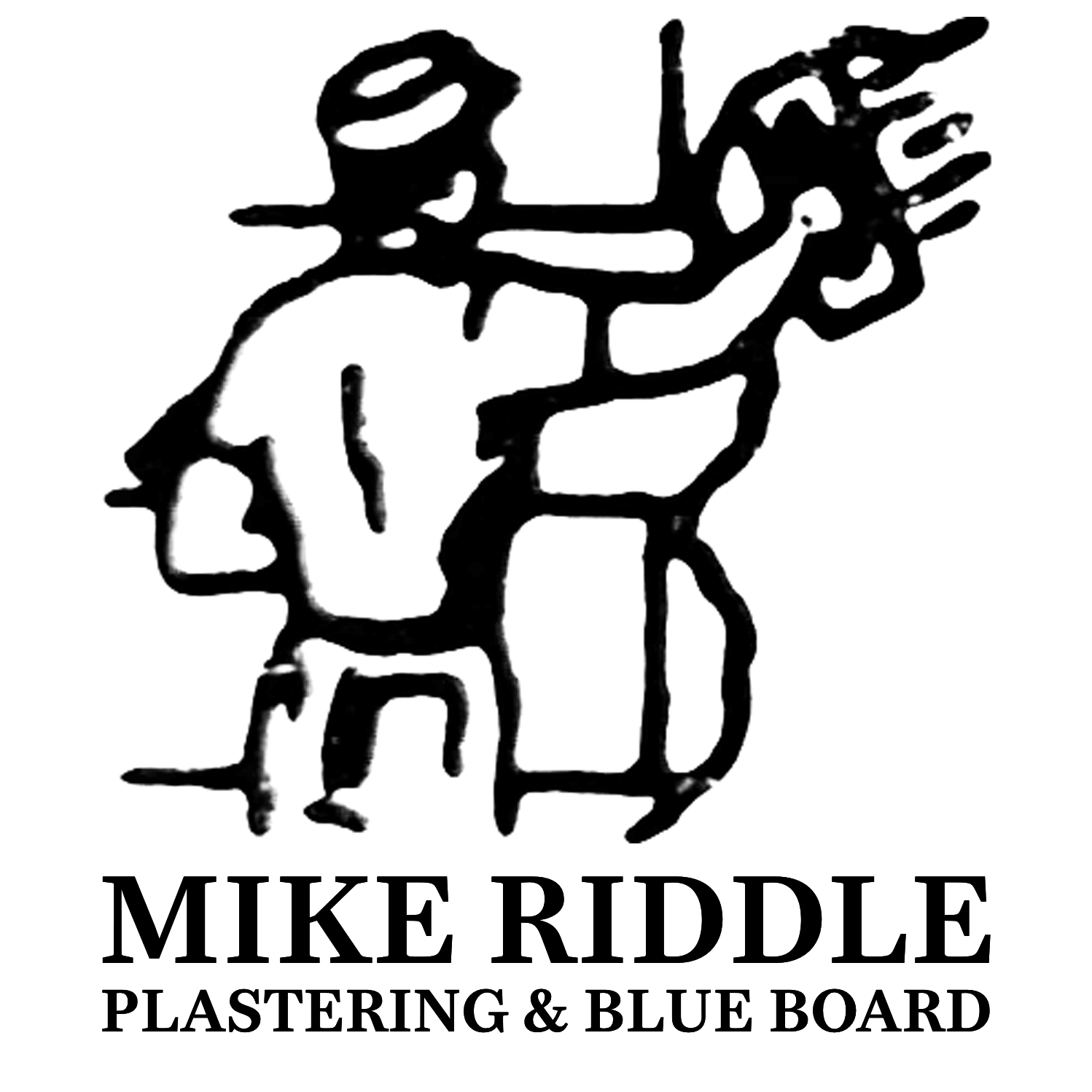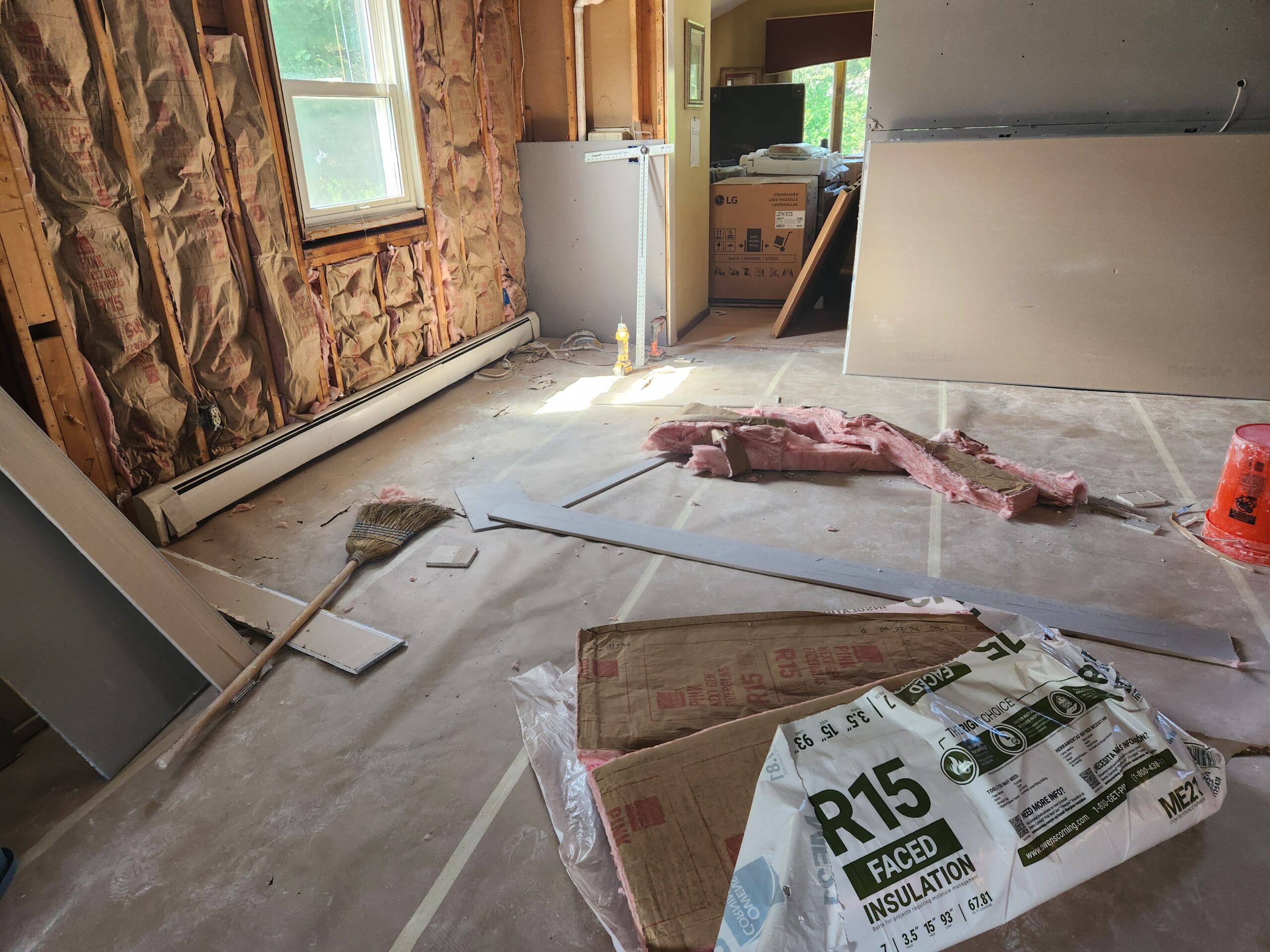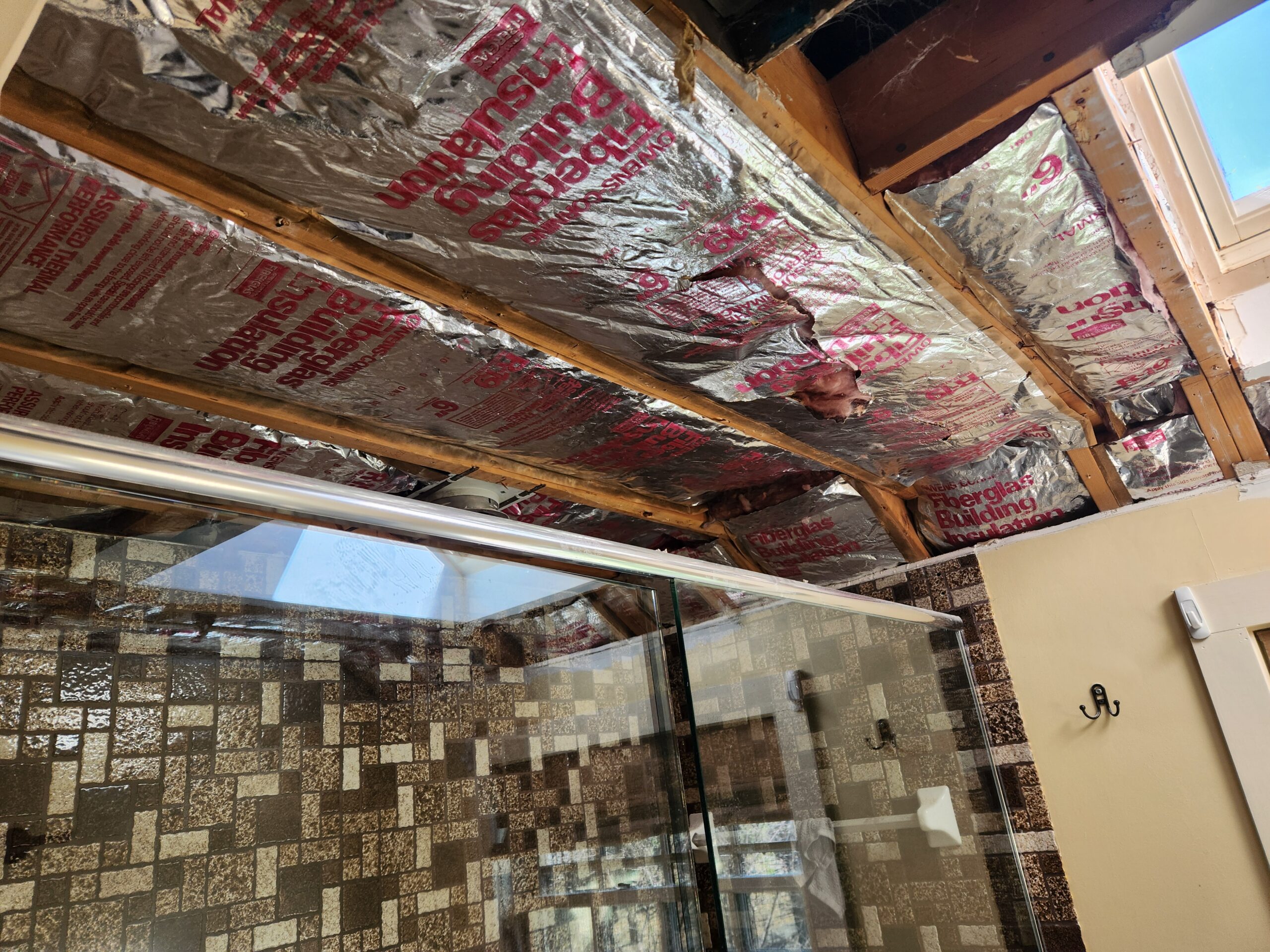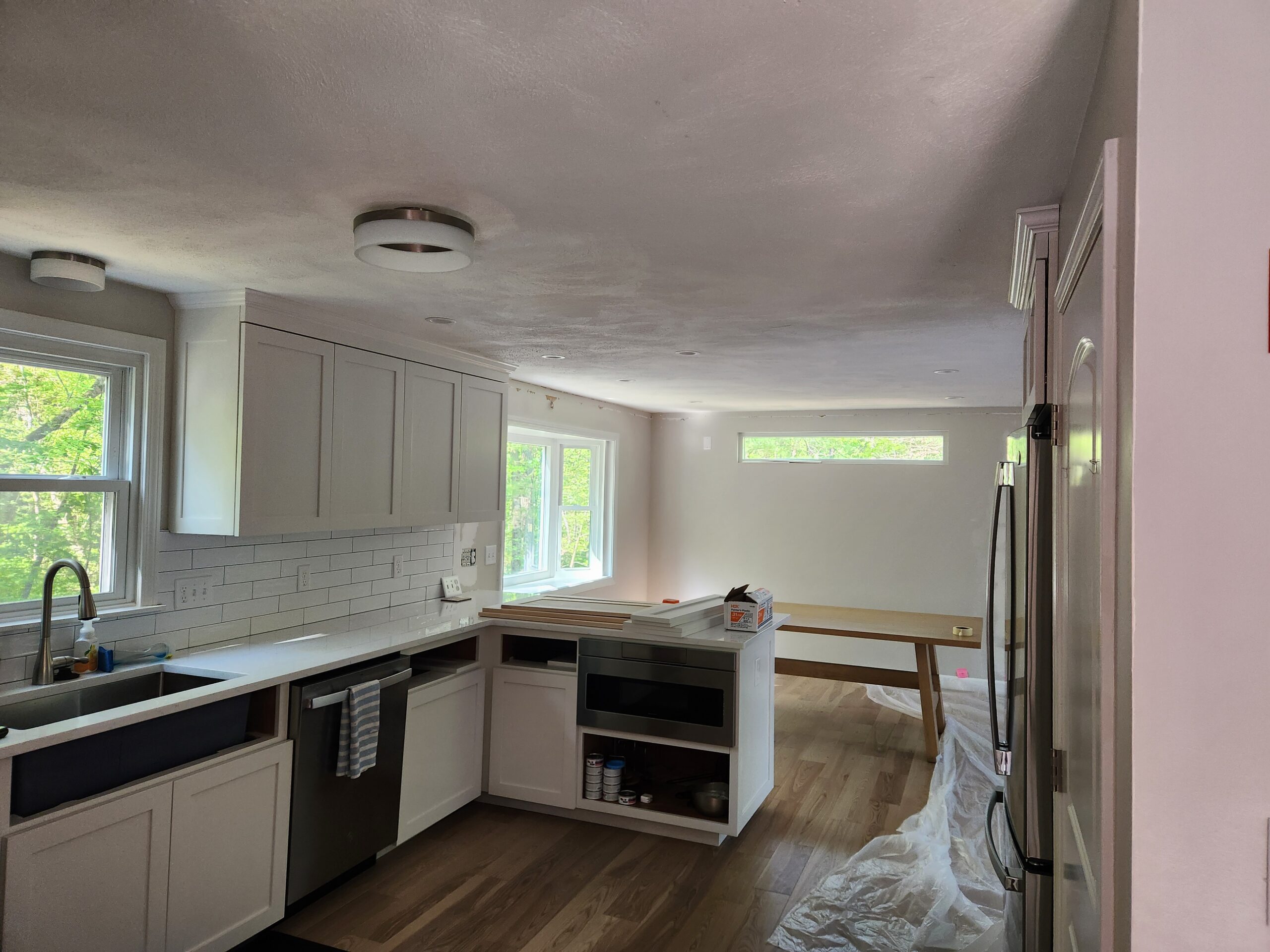Skilled craftsmanship and reliable service
Mike Riddle Plastering is a family-owned business specializing in residential and commercial plastering with decades of experience in Massachusetts and New Hampshire. The company, known for its skilled craftsmanship and reliable service, focuses on skim coat plastering for smooth, paint-ready surfaces and handles projects ranging from small repairs to full-room installations.
The typical process for a plaster repair job involves several key steps to ensure a smooth, durable, and seamless finish. The procedure may vary slightly depending on the type and extent of the damage, from small cracks to larger holes.
1. Preparation
Before any patching begins, the work area must be properly prepared to protect furniture and floors from dust and debris. This involves:
- Inspecting and cleaning the area: The plasterer will carefully inspect the damaged area to assess the damage’s extent and identify the cause, such as water damage or foundation settling. All loose or damaged plaster is then removed with a scraper or other tools, and the area is cleaned of debris and dust.
- Reinforcing the structure: For larger holes where the wooden lath is exposed, a professional will replace or refasten loose lath to stabilize the area. In some cases, a metal lath or plaster washers are used to provide a stronger base for the new plaster.
- Applying a bonding agent: For older, potentially dusty surfaces, a bonding agent is often painted onto the plaster and lath. This ensures the new plaster properly adheres to the old material.
2. Application
Once the area is prepped, layers of plaster are applied to rebuild the wall’s surface. For larger holes or deep damage, this typically involves multiple coats:
- Scratch coat: A thick first coat is applied and pushed into the gaps of the lath to create a strong anchor, or “keys”. This coat is often scored with a tool to provide a better surface for the next layer to stick to.
- Brown coat: A second layer is applied to build up the thickness and level the wall, bringing it nearly flush with the original surface.
- Finish coat (skim coat): A thin final layer of finishing plaster or joint compound is applied to achieve a smooth, seamless surface. This coat is expertly troweled to blend the repaired section perfectly with the surrounding wall.
3. Finishing
The final stages focus on achieving a flawless, paint-ready surface:
- Drying and sanding: Each coat of plaster must be allowed to dry fully before the next is applied. After the final coat has dried, it is lightly sanded to eliminate any remaining ridges or imperfections. This process can be quite dusty, so a good plasterer will take steps to minimize the mess.
- Priming and painting: The repaired area is primed to seal the porous new plaster and ensure a uniform paint finish. Once the primer has dried, the new surface is ready for painting or wallpapering.
Servicing North Eastern MA And Southern NH
Phone: 978-912-2821 • Email: mriddle9780@aol.com
Hours of Operation:
Monday: 8am – 5pm
Tuesday: 8am – 5pm
Wednesday: 8am – 5pm
Thursday: 8am – 5pm
Friday: 8am – 5pm
Saturday: On Request
Sunday: On Request





